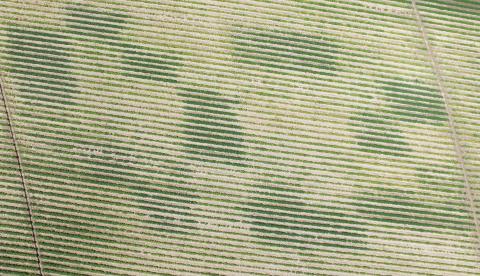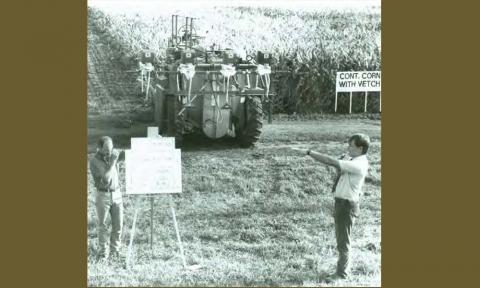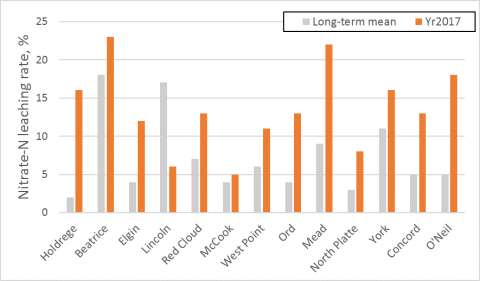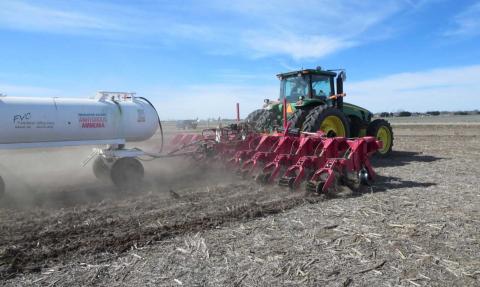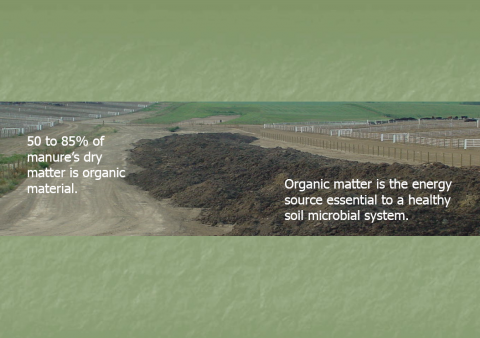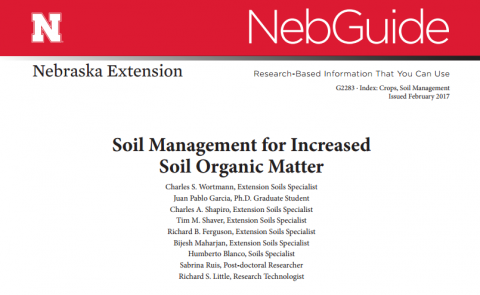Cover Crop and CO2 Emissions
February 26, 2018
Do cover crops affect CO2 emissions from the soil and if so, under what conditions? These were among the questions addressed by university researchers monitoring CO2 emissions from cereal rye cover crops in irrigated and dryland no-till continuous corn treatments.
Coal Combustion Residue: A Potential Soil Amendment
February 22, 2018
University of Nebraska researchers applied char, a by-product of sugar beet processing, at three sites to study its effect on soil properties.
It is Time to Hang Up the Soil Probe ― Reflections on a Career
December 13, 2017
In his final article for CropWatch Nebraska Soil Scientist Charles Shapiro reflects on changes in crop nutrient management practices across his career.
How Manure Impacts Soil Aggregation
July 6, 2017
Researchers compare differences between soils fertilized with three types of manure versus commercial products and note four benefits, including an increase in water-stable large macro-aggregates that hold P differently.
Risk of Nitrate Leaching Across Nebraska as of May 21, 2017
May 25, 2017
Following heavy spring rains UNL soil scientists model potential loss of nitrate-N to soil leaching, finding an average 14% loss from mid-April levels, with three sites with much higher losses.
Fertilizer Price Changes from 1994-2017
April 25, 2017
Fertilizer, one of the major costs in crop production, changes more in price each year than many other input costs. This articles addresses how farmers can reduce their fertilizer costs by selecting the most economical source for the fertilizer they need.
Finding Win-Wins for Manure: Maximizing Soil Quality Benefits
March 6, 2017
Manure offers crop production wins by providing valuable nutrients and helping build soil organic matter and an active soil microbial community. Soils with organic matter levels on the low end of their typical range can benefit the most from manure applications that do not exceed the crop’s nitrogen requirements. Organic matter also improves soil aggregates which in turn helps increase infiltration of precipitation and irrigation water, improves water-holding capacity of the soil, and reduces runoff and erosion. Soils with these characteristics experience greater drought tolerance.
New NebGuide: Soil Management for Increased Soil Organic Matter
March 2, 2017
A new Nebraska Extension NebGuide discusses the steady state level of soil organic matter and how some management practices can reduce soil organic matter loss or increase soil organic matter.

